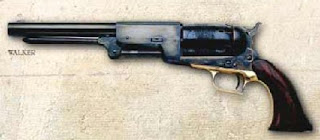A drinking straw is a utensil that is intended to carry the contents of a beverage to one's mouth. Disposable straws are commonly made from plastics. However, environmental concerns related to plastic pollution and new regulation have led to rise in reusable and biodegradable straws. Following a rise in regulation and public concern, some companies have even voluntarily banned or reduced the number of plastic straws used. Alternative straws are often made of reusable materials like silicone or metal or alternative disposable and biodegradable materials like paper, cardboard, pasta, or bamboo.
A straw is used by placing one end in one's mouth and the other in a beverage. By employing suction, the air pressure in one's mouth drops causing atmospheric pressure to force the liquid through the straw and into the mouth. Drinking straws can be straight or have an angle-adjustable bellows segment. Straws have been used since earliest recorded history, with the first extent straws dating from the 4th century BCE. Different traditional drinks and foods use straws designed for explicit purposes, such as the "straw and sieve" bombilla used to drink the mate infusion common to South America. Since the early 20th century, mass-production of straws from plastic and other industrial products such as cellophane has increased the widespread availability of disposable straws.
Though most straws are used by able-bodied peoples, they play an important role in food and drink access for people with physical disabilities that effect peoples ability to swallow, hold glassware, or carry the weight of drinks or other liquids. Straws can also be an important part of both child and elderly care or in recovery from certain medical procedures such as dental work, making it safer and easier to consume liquids, though may not always be advisable depending on the health situation.
History
Early examples
The first known straws were made by the Sumerians and were used for drinking beer, probably to avoid the solid byproducts of fermentation that sink to the bottom. The oldest drinking straw in existence, found in a Sumerian tomb dated 3,000 BCE, was a gold tube inlaid with the precious blue stone lapis lazuli. Others claim metal ‘sceptres’ discovered in Armenia in 1897 and date to the Maykop culture (3700 to 2900 BCE) as the oldest surviving straws.
In the 1800s, the rye grass straw came into fashion because it was cheap and soft, but it had an unfortunate tendency to turn to mush when put in liquid.
American Marvin C. Stone patented the modern drinking straw, 81⁄2 inches long and made of paper, in 1888, to address the shortcomings of the rye grass straw. He came upon the idea while drinking a mint julep on a hot day in Washington, D.C.; the taste of the rye grass straw was mixing with the drink and giving it a grassy taste, which he found unsatisfactory. He wound paper around a pencil to make a thin tube, slid out the pencil from one end, and applied glue between the strips. He later refined it by building a machine that would coat the outside of the paper with wax to hold it together, so the glue would not dissolve in bourbon.
Early paper straws had a narrow bore, to prevent seeds from clogging them. It was common to use two of them, to reduce the effort needed to take each sip.
If you want to read a lot more, go here: https://en.wikipedia.org/wiki/Drinking_straw
- SERVES
- 6
- COOK TIME
- 12 Min
If you love ordering spring rolls from Chinese takeout restaurants, then this is the recipe for you! Our spring rolls are easy to make and taste amazing. They're filled with a flavorful veggie mixture and fried until golden and crispy. They make a great appetizer or can be served right alongside some fried rice and your favorite takeout main dish!
- 1/2 cup soy sauce
- 1/4 cup packed light brown sugar
- 1 tablespoon ground ginger
- 2 teaspoons garlic powder
- 6 cups shredded Chinese cabbage
- 2 cups fresh bean sprouts
- 1 large carrot, shredded
- 3 scallions (green onions), chopped
- 12 spring roll or egg roll wrappers
- 1 egg, lightly beaten
- Oil for frying
- In a small bowl, combine soy sauce, brown sugar, ginger, and garlic powder; mix well.
- In a large bowl, combine cabbage, bean sprouts, carrot, and scallions; mix well. Pour soy sauce mixture over cabbage mixture; toss to coat well and let stand 10 minutes. Place cabbage mixture in a colander and squeeze to drain well.
- Spoon about 1/4 cup cabbage mixture evenly onto center of each egg roll wrapper. Lightly brush edges of egg roll wrapper with beaten egg. Fold one corner of each egg roll wrapper up over cabbage mixture then fold both sides over, envelope fashion; roll up tightly.
- Heat about 1-1/2 inches oil in a deep medium saucepan over medium-high heat until hot but not smoking. Add spring rolls in batches and fry 2 to 3 minutes per side, or until golden. Drain on a paper towel-lined platter. Serve immediately, but be sure to use caution -- the filling will be hot.












